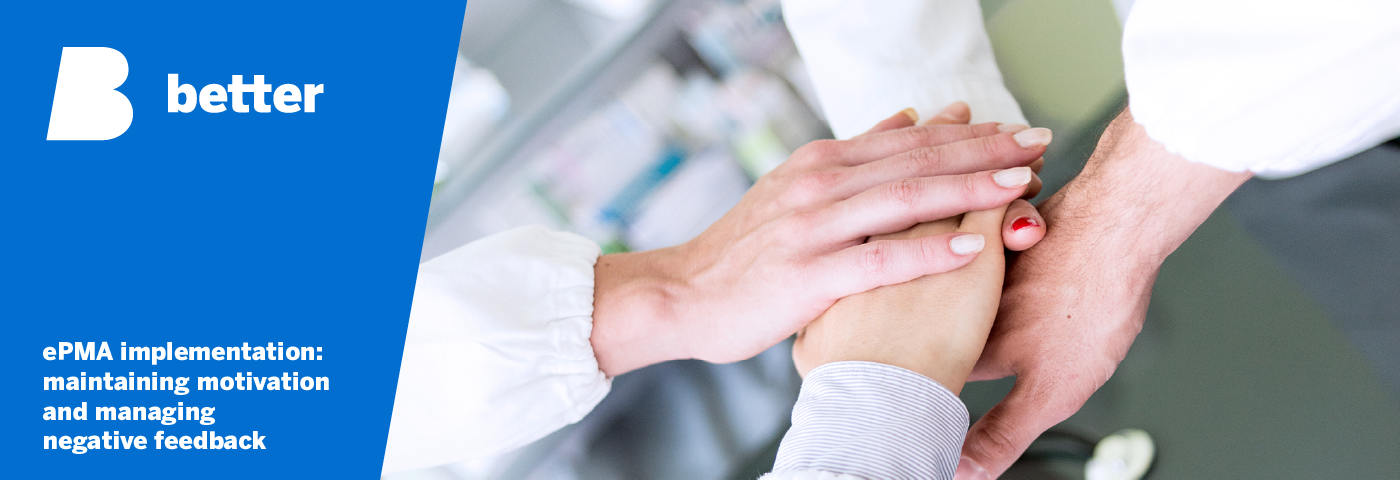ePMA implementation: maintaining motivation and managing negative feedback
At our webinar titled “How to motivate the team during an ePMA implementation”, we hosted David Chalkley, deputy CCIO and Digital Clinical Safety Lead at Somerset NHS Foundation Trust. In the first part of the summary, we shared his experience regarding the formation of an ePMA team, engaging with various stakeholders, and communication during the project. In the second part, we will turn our attention to maintaining team motivation during the project, and how to manage possible negative feedback.
Maintaining motivation during daily challenges
The core of motivation is that the team has the right value alignment, to the extent that this is something they all believe in. David Chalkley said, “We are all doing it for the patient, for the staff, and for the organisation. To some extent, more or less, people joined this project because they wanted to deliver a change, and that may be for their own personal challenge, or for their own fulfilment, but the heart of it is about trying to improve patient care, the experience of the staff, and efficiency, all while delivering an overall better healthcare system throughout an organisation.”
Motivation has multiple sides to it, whether that is effective communication, providing opportunities for people to engage with staff at all levels, or creating opportunities on a programme level, all of which allow people to have the creative space for their own ideas. Everything should be underpinned by recognition as well – to celebrate success with individuals, and allow those individuals to participate in local, regional, and international events, and to share their learning.
David Chalkley also highlights the “softer” side of team motivation: “We need to make sure there is an equality of voices in the team; that people are able to share their voices and opinions in the project, and that there is a relatively equal distribution of ‘air-time’ that is not dominated by one or two individuals. You need to have the right level of emotional intelligence so that you can support people when they need support; so that you can recognise people, and so that you can advise people to properly manage the time that team members take part in the project itself… A lot of this isn’t defined; its more about the balance and unwritten rules that hopefully keep people motivated and engaged as part of the team.”
Managing the negative feedback
Even though the purpose of ePMA is to improve both the experience of healthcare professionals and patient care, some doubts may occur within the organisation. The ePMA implementation project at the Somerset NHS Foundation Trust went really well, and went without and major setbacks, but David Chalkley still pointed out the need for managing possible negativity from vocal senior doubters: “It does have a high impact on the confidence on the people trying to deliver the product when you have people of seniority that are vocalising doubt, but not necessarily through the right channels. In that area we tried to bring the right support of the project to building Chief Clinical Information Officer and Chief Nursing Information Officer capabilities and capacities, as well as senior nursing engagements, so that we could channel people’s concerns through the right individuals, and not through broad reaching networks that could be demoralising for a team.”
- Want to learn more about team formation and communication for ePMA implementation? Click here.
- Would you like to watch the original webinar? Register here for the full recording.
- Somerset NHS Foundation Trust implemented Better Meds in Autumn 2019. Read the full story here.
